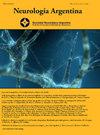Recent advancements in nanoparticle drug delivery systems to cure neurological disorders via the nasal route
Q4 Medicine
引用次数: 0
Abstract
Neurological disorders present a significant global health challenge, with limited effective treatment options due to the complex and selective nature of the blood–brain barrier (BBB). Recent years have witnessed remarkable advancements in nanoparticle-based drug delivery systems designed to overcome these barriers and enhance the therapeutic outcomes of neurological disorder treatments. Among these innovations, nasal drug delivery has emerged as a promising non-invasive approach to bypass the BBB and directly target the central nervous system (CNS). This article provides an overview of the origin of nanotechnology and its intersection with biotechnology, leading to the emergence of nanobiotechnology. It highlights the role of nanotechnology in drug delivery and its potential to enhance the effectiveness of nanoscale structures in biomedical science. The article emphasizes the significance of the chemical composition of nanoparticles (NPs) in determining their physiochemical properties and drug-release behavior. The challenges posed by the BBB in delivering drugs to the CNS and the limited permeability of macromolecules to the barrier. The article emphasizes the role of the BBB as a diffusion barrier and explains the mechanisms by which molecules can cross the barrier. It mentions the presence of interendothelial junctions and receptors/transporters in endothelial cells that regulate the permeability of the BBB. Overall, the article provides an overview of the role of nanoparticles in drug delivery through the nasal route for the treatment of neurological disorders.
经鼻途径治疗神经系统疾病的纳米颗粒给药系统的最新进展
神经系统疾病是一项重大的全球健康挑战,由于血脑屏障(BBB)的复杂性和选择性,有效的治疗方案有限。近年来,基于纳米颗粒的药物输送系统取得了显著进展,旨在克服这些障碍,提高神经系统疾病治疗的治疗效果。在这些创新中,鼻给药已成为一种有前途的非侵入性方法,可以绕过血脑屏障,直接靶向中枢神经系统(CNS)。本文概述了纳米技术的起源及其与生物技术的交叉,从而导致了纳米生物技术的出现。它突出了纳米技术在药物传递中的作用及其在生物医学科学中提高纳米级结构有效性的潜力。本文强调了纳米颗粒的化学组成在决定其理化性质和药物释放行为中的重要意义。血脑屏障在向中枢神经系统输送药物时所带来的挑战以及大分子对屏障的有限渗透性。本文强调血脑屏障作为扩散屏障的作用,并解释了分子可以通过该屏障的机制。它提到了内皮细胞中内皮间连接和受体/转运体的存在,它们调节血脑屏障的通透性。总的来说,这篇文章概述了纳米颗粒在通过鼻腔给药治疗神经系统疾病中的作用。
本文章由计算机程序翻译,如有差异,请以英文原文为准。
求助全文
约1分钟内获得全文
求助全文
来源期刊

Neurologia Argentina
Medicine-Neurology (clinical)
CiteScore
0.50
自引率
0.00%
发文量
34
期刊介绍:
Neurología Argentina es la publicación oficial de la Sociedad Neurológica Argentina. Todos los artículos, publicados en español, son sometidos a un proceso de revisión sobre ciego por pares con la finalidad de ofrecer información original, relevante y de alta calidad que abarca todos los aspectos de la Neurología y la Neurociencia.
 求助内容:
求助内容: 应助结果提醒方式:
应助结果提醒方式:


